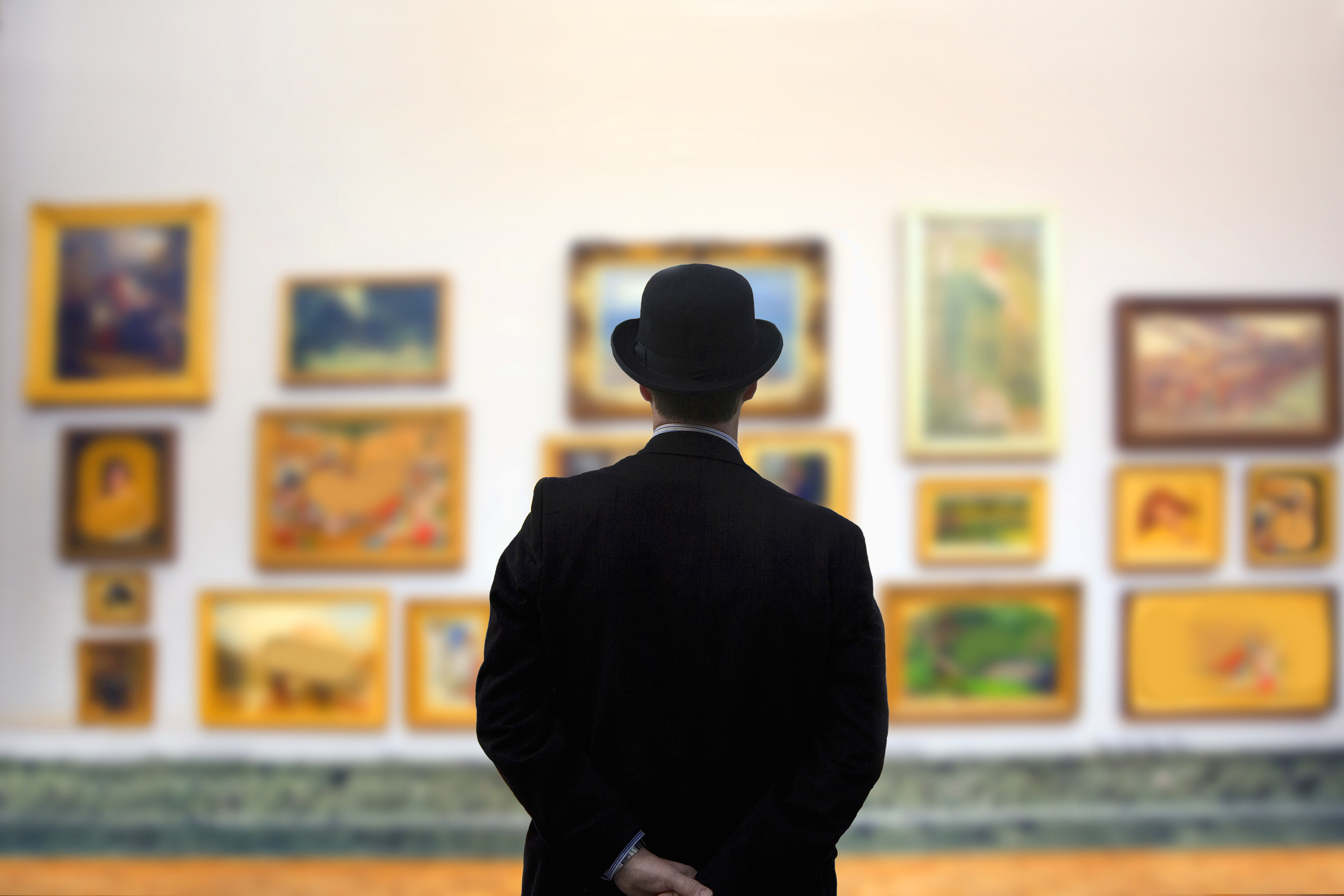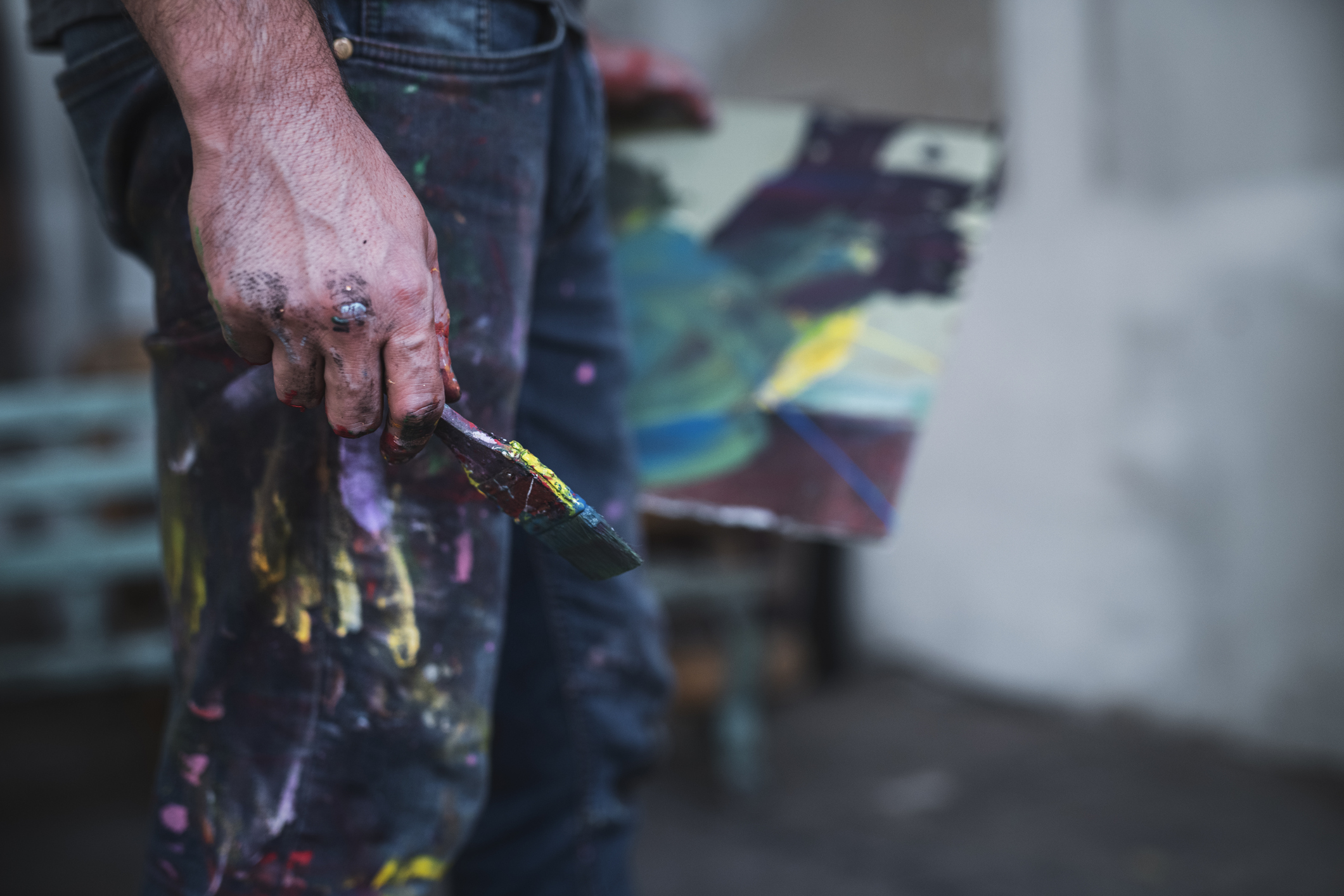A guide to reviving art on the Right.
Conversion to the Right

Understanding a piece of art in all its dimensions must come before any other consideration.
Since the days when, as a schoolboy, I used to bicycle round the neighbouring parishes, rubbing brasses and photographing fonts, I have nursed a love of architecture, but though in opinion I had made that easy leap, characteristic of my generation, from the puritanism of Ruskin to the puritanism of Roger Fry, my sentiments at heart were insular and mediaeval.
This was my conversion to the baroque. Here under that high and insolent dome, under those tricky ceilings; here, as I passed through those arches and broken pediments to the pillared shade beyond and sat, hour by hour, before the fountain, probing its shadows, tracing its lingering echoes, rejoicing in all its clustered feats of daring and invention, I felt a whole new system of nerves alive within me, as though the water that spurted and bubbled among its stones was indeed a life-giving spring. – Brideshead Revisited, Chapter Four
***
Evelyn Waugh’s Brideshead Revisited is an example of great art on the Right.
The favorite of many Catholics, this novel depicts the conversion of a young English artist named Charles Ryder from the banality of secular culture to the truth of the Catholic faith. Waugh weaves together the threads of Ryder’s professional life as an artist, his private life as the friend of an English Catholic family, and his spiritual life as an eventual Catholic convert.
Those who want to revive great art on the Right could do no better than to read Brideshead—or to watch the excellent BBC miniseries, which proves that it is indeed possible to translate a brilliant psychological novel from the page to the silver screen. Whether you read the novel or watch the BBC rendition, you will recognize a crucial principle (captured in the quote above) that the Right should take note of: Conversion of the heart begins as conversion of taste.
Ryder’s spiritual conversion to Catholicism begins with an aesthetic conversion to the baroque: seeing the beauty of the art of that period comes before considering its spiritual implications. Forgetting this may explain why conservatives fare so poorly in today’s culture wars. It may also give us a clue about how to start a renaissance of art on the Right.
Downstream From Culture?
The dispute over whether art or politics is paramount seems to bloom perennially—yet it always bears little fruit. But from reading Spencer Klavan’s recent essay, the branches may finally produce something worthwhile.
Klavan focuses not so much on the power of making art as on the ability to appreciate art, not so much on artistry as on taste. He argues that the underlying reason why there is no good art on the Right is not because we lack good artists but because we lack good audiences. To put it much less artfully than Klavan, the reason why the Right creates bad art is because we mostly have bad taste.
Klavan’s diagnosis of the crisis of art on the Right is useful, because it helps explain why the Left seems to be so much better at winning the culture war: the Left is better at separating the seeing of art from the subsequent political interpretation of art.
Make no mistake: left-wing artists and art critics are at least as politically biased as their counterparts on the Right. They use their art as a rhetorical shillelagh to bludgeon their political foes. Yet through all this partisanship, Klavan argues that leftist artists and audiences are more able than those on the Right to separate their judgment about whether something is good art from their judgment about whether it is good morally, religiously, or politically.
This means that to truly appreciate art, Klavan argues that we need to learn from the Left. We need to see art first and foremost as art—imitation, in all its beauty, truth, and wholeness—rather than a means to a moral or political end.
Was Andrew Breitbart right that politics is downstream from culture? Maybe. Is political art downstream from cultural art? Definitely. And the reason for this is rooted in the very nature of how we properly evaluate art.
First Perception
Klavan is not the first to suggest that the Right is bad at appreciating art. The late Louise Cowan, a professor of literature who founded the University of Dallas, was famous for taking conservatives to task for moving too quickly from reading to interpretation.
Cowan was friends with many of the Southern Agrarians and other great southern authors like Flannery O’Connor and Robert Faulkner. In the art these great American authors produced, as well as in the novels of Dostoevsky, Cowan believed she discovered a teaching with profound moral and spiritual implications: great art doesn’t imitate things in the world—it imitates the world as a whole. The practical lesson is that we should understand art before we think through its implications for politics, religion, morality, or anything else.
In her classes on Dostoevsky’s Brothers Karamazov, for instance, Cowan was mercilessly intolerant of any interpretation that began by taking Ivan Fyodorovich, or his brothers Dmitri and Alexei, as metaphors for parts of the human soul or as stand-ins for “worldviews” articulated by philosophers, poets, or politicians. To truly understand the Brothers K, or any great work, Cowan insisted that we must take its characters as fully human, as imitations of particular human beings. Only then, having fully immersed oneself in the world Dostoevsky created, could one consider the novel’s implications for Russian politics, the moral philosophy of justice, or the truth of faith.
As Cowan’s eyesight failed in her later years, she began carrying an elegant white cane, which she used to upbraid young conservative students of politics or philosophy who failed to admire the art of a novel. Watching this transpire in person was like seeing Philosophy on trial before Poetry, a young student of Socrates or Bacon standing before the judgment seat of a latter-day Homer or Milton.
But like Homer or Milton, Cowan’s teaching on the proper way to see art was founded on an understanding of how the human soul is structured, and of what causes it to turn. For this, we can find support in the teachings of classical political philosophy.
The Conversion of the Soul
How can an artist defend the practice of imitating the ugly, the evil, or the unjust? Do not such depictions tend to corrupt the souls of his audience by exposing them to bad examples?
One crude but consistent response is that the depiction of evil is simply unjustifiable. Those who take this stand may be right, but they must in any event remain silent. A more common and polite response is to say that we admire the skill of the artist, even if the subject matter is questionable. But when we say this, we are not really being honest with ourselves, because what excites us about good art is inextricable from its subject matter.
Plato and Aristotle offer a better explanation for why we love to look at corpses, tragedies, and other dreadful images: we do it because we love to see—because we love to learn.
Plato distinguishes the part of the soul that wants to see from the (theoretical) part that wills (spiritedness, anger, or thumos). There is nothing beautiful about a corpse as such. What is beautiful is the action of seeing itself; what is beautiful is contemplation or theory (theorein) as such. The political part of Leontius’s soul, the part that is going about his daily practical business in a workmanlike way, wants no part of gazing upon the corpses of dead criminals. But the philosophic part of his soul cannot be turned aside.
Similarly, Aristotle links our love of imitation to “two natural causes”: first, the fact that men are naturally imitative and learn by imitating; second, the pleasure of learning itself. This distinction corresponds to Aristotle’s account of reason, in which the action of the soul in seeing, or taking part in theoretical activities (theoretike), is fundamentally different from the soul’s action in poetic or technical activities (poietike). The poetic mind seeks the technical perfection of its work; it exists to build well and admire the technique of builders. The theoretical mind, however, seeks the truth in a work of art.
Tragedy, for Aristotle, is justified not by what one learns about morality or justice—rather, it is justified by the fact that one learns. This is why the zenith of every tragedy is not its choruses, which often convey moral or political teachings, but rather the moment of recognition—for example, when Odysseus discovers that he murdered his father. Only when the audience is able to see a work of art as a whole do they become capable of being truly changed by it.
For Aristotle, as for Plato—and Cowan and Evelyn Waugh—the contemplation of art is an activity that is worthy in itself apart from any moral lesson one learns from this contemplation. But—and this is the crucial point for us today—the contemplation of art, as a separate activity, is the indispensable starting point for educating the soul, or the possibility of initiating a profound conversion of the heart.
Aristotle and Plato cared deeply about educating men to virtue, but they understood that neither the fire of spiritedness nor the iron rigor of habit suffice to turn men’s hearts. Similarly, the ancients cared deeply about creating cities of justice and virtue, but they discovered that neither the force of law nor the stronger unwritten law of custom was enough to change the character of a people.
For the conversion of the soul from vice to virtue, one needs contemplation to complement practice and technique, a contemplation that loses itself in the object being contemplated. For a political community to go from following injustice to justice, slavery to freedom, or mediocrity to greatness, its people need the ability to see great art, and see it well.
A real renaissance on the Right will begin with a renaissance of the arts. And the renaissance of the arts will begin with the cultivation in citizens of seeing art as art, the indispensable first step of a true conversion to virtue.
The American Mind presents a range of perspectives. Views are writers’ own and do not necessarily represent those of The Claremont Institute.
The American Mind is a publication of the Claremont Institute, a non-profit 501(c)(3) organization, dedicated to restoring the principles of the American Founding to their rightful, preeminent authority in our national life. Interested in supporting our work? Gifts to the Claremont Institute are tax-deductible.
Remedying the Right’s disastrous forays into culture.
The Left’s war on culture is a historic opportunity for the Right.
Conservatives must snub political kitsch for aesthetic greatness.
Between provocation and propaganda.
What we talk about when we talk about culture.






